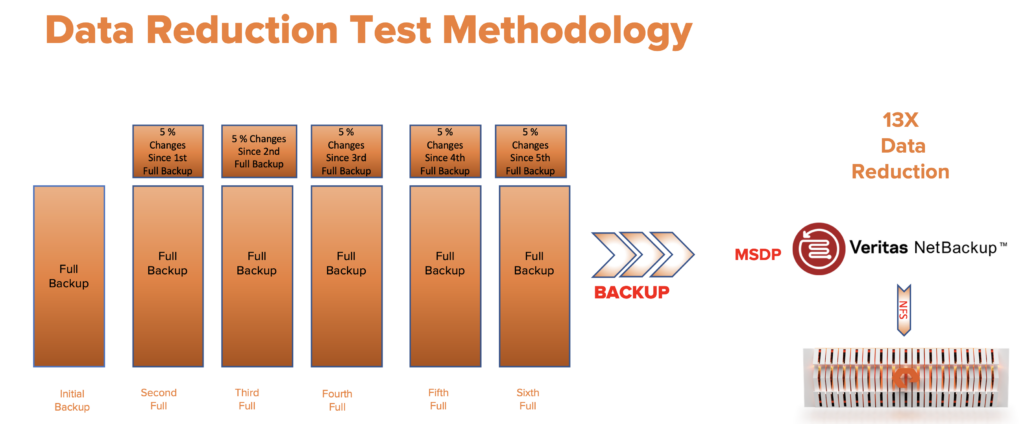Around-the-clock global operations along with the explosion of data growth have impacted many organizations’ backup and recovery strategies. And the overall data reduction rate is highly considerate for incubating the right data protection solutions in the data center. One of the computing techniques such as data deduplication makes a huge difference. There are multiple ways that the data deduplication engine is implemented, such as inline-dedupe or/and post-processing deduplication. Let’s go and take a look at the NetBackup MSDP engine (an inline deduplication engine)
What is NetBackup MSDP (Media Server Deduplication Pool)
Veritas NetBackup provides the deduplication options that let you deduplicate data everywhere, as close to the source of data as you require. MSDP provides the following benefits:
- Reduce the amount of data that is stored.
- Reduce backup bandwidth.
- Reduce backup windows.
- Reduce infrastructure.
MSDP lets you choose at which point in the backup process to perform deduplication. NetBackup can manage your deduplication wherever you implement it in the backup stream.
NetBackup MSDP with FlashBlade has multiple options to perform the data deduplication
- Media Server Deduplication. In this option, the NetBackup client software creates the image of backed up files as for a normal backup. The client sends the backup image to a media server, which hosts the plug-in that duplicates the backup data. The media server can be the storage server or a load balancing server if one is configured. The deduplication plug-in breaks the backup image into segments and compares the segments to all of the segments that are stored in that deduplication node. The plug-in then sends only the unique segments to FlashBlade NFS storage target through the MSDP storage server.
- Client-Side Deduplication: With NetBackup MSDP Client-side deduplication, the client (primary application) deduplicated the backup data and send it directly to the Media server storage pool (aka storage server), and writes it to the FlashBlade NFS storage target. This option is suitable when one doesn’t want to load up the backup traffic over the LAN.
NetBackup MSDP on FlashBlade(nfs) Deduplication Test
This study illustrates the benefits of compression on deduplication offered by Veritas MSDP with FlashBlade compression while performing full backups of Oracle databases. The test strategy and results from these tests is described below.
Test Strategy: In this test, a series of full backups of eight Oracle databases is performed through Veritas NetBackup. As with the backup tests, we performed the level 0 full backup first, captured the data reduction numbers, and then introduced 5% of change into the database. Next, we performed a level 1 full backup of the database and again captured the data reduction numbers. We performed the series of level 1 backups 5 times to simulate 5 days of daily full backups with a 5% change introduced on a daily basis.

Data Reduction Rates
It has been observed that when NetBackup deduplication is enabled and configured with FlashBlade and with FlashBalde’s native compression feature, the data reduction rates achieved in the tests are as high as 13X. The data reduction tests involved backing up several databases.
Compression: Both NetBackup and FlashBlade have compression enabled by default. It has been observed that when compression is enabled on both NetBackup and FlashBlade, data consumption on FlashBlade reduces by 30% hence keeping the low TCO. As a best practice, keep the default settings for compression on NetBackup for deduplicated data.
Encryption: FlashBlade encryption is enabled by default for data at rest and keys are distributed over all the blades, however, if encryption is required “in-flight” to the storage target, then utilizing NetBackup encryption should be implemented as well. NetBackup offers policy-based encryption and encryption for deduplicated data.
For backup and restore performance numbers on NetBackup MSDP and FlashBlade please read the blog in this link
![]()